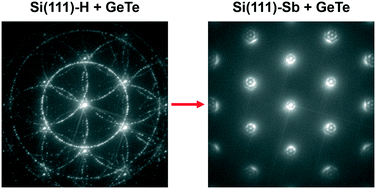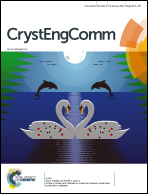Tailoring the epitaxy of Sb2Te3 and GeTe thin films using surface passivation†
Abstract
Chalcogenide thin films are exciting candidates for electronic applications such as spintronic devices, non-volatile memories and thermoelectric materials. To achieve such applications the understanding of their thin film growth is of paramount importance. In this work the epitaxy of exemplary chalcogenides Sb2Te3 and GeTe on different surfaces of Si(111) with atomically sharp interfaces is presented and compared using plan-view transmission electron microscopy and electron diffraction. It is shown that depending on the monolayer surface termination the resulting films present drastic differences in terms of film morphology and crystallinity. In particular, a profound difference is found between the films grown on H-passivated and Sb-passivated surfaces. In both cases, the out-of-plane texture is strongly c-axis oriented, but the case of Si(111)–H shows the frequent occurrence of random in-plane twist for both films, while for Si(111)–Sb this is strongly suppressed. The role of the substrate-film interface for the epitaxy is discussed and the consequences for the properties of the films are highlighted. In general, the insights of these results shed light on chalcogenide thin film growth for topological insulator, ferroelectric, thermoelectric and phase-change materials research.



 Please wait while we load your content...
Please wait while we load your content...